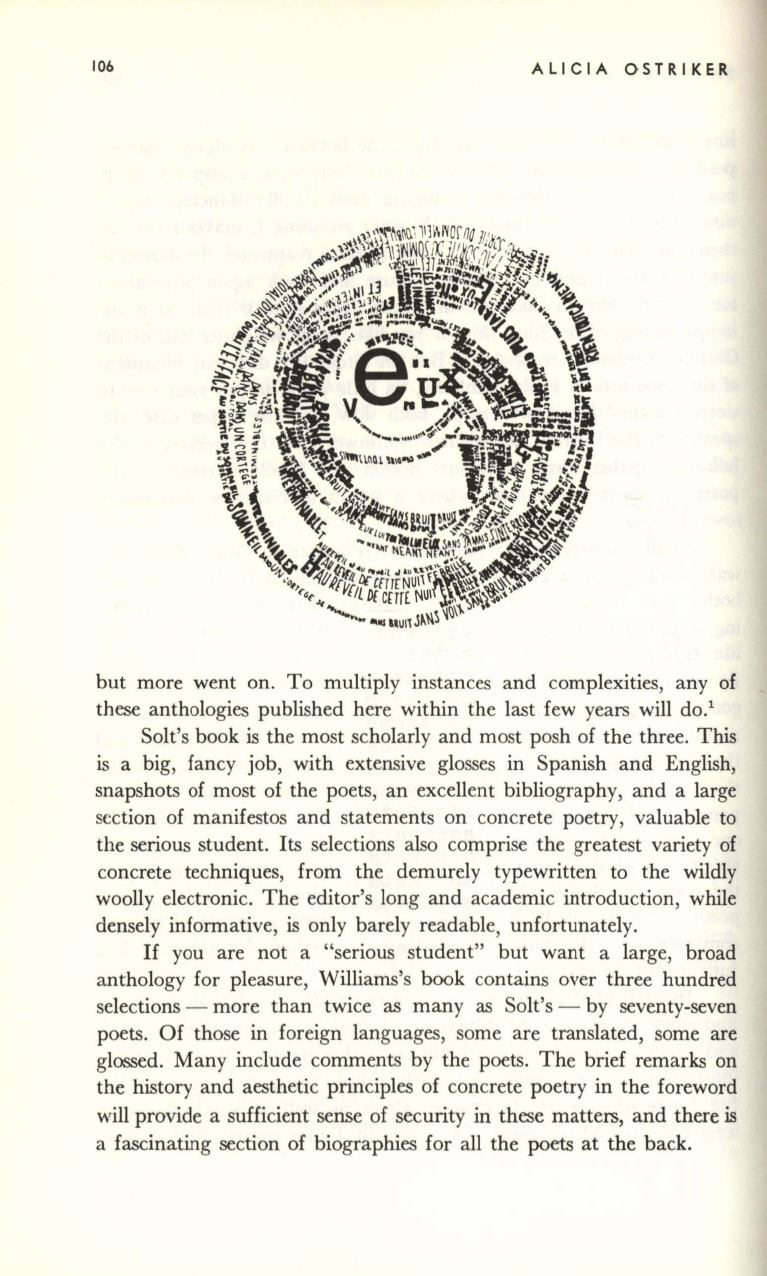
106
ALICIA OSTRIKER
but more went on. To multiply instances and complexities, any of
these anthologies published here within the last few years will do.
1
Solt's book is the most scholarly and most posh of the three. This
is a big, fancy job, with extensive glosses in Spanish and English,
snapshots of most of the poets, an excellent bibliography, and a large
section of manifestos and statements on concrete poetry, valuable to
the serious student. Its selections also comprise the greatest variety of
concrete techniques, from the demurely typewritten to the wildly
woolly electronic. The editor's long and academic introduction, while
densely informative, is only barely readable, unfortunately.
If
you are not a "serious student" but want a large, broad
anthology for pleasure, Williams's book contains over three hundred
selections - more than twice as many as Solt's - by seventy-seven
poets. Of those in foreign languages, some are translated, some are
glossed. Many include comments by the poets. The brief remarks on
the history and aesthetic principles of concrete poetry in the foreword
will
provide a sufficient sense of security in these matters, and there
is
a fascinating section of biographies for all the
poets
at the back.


